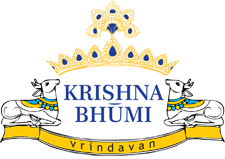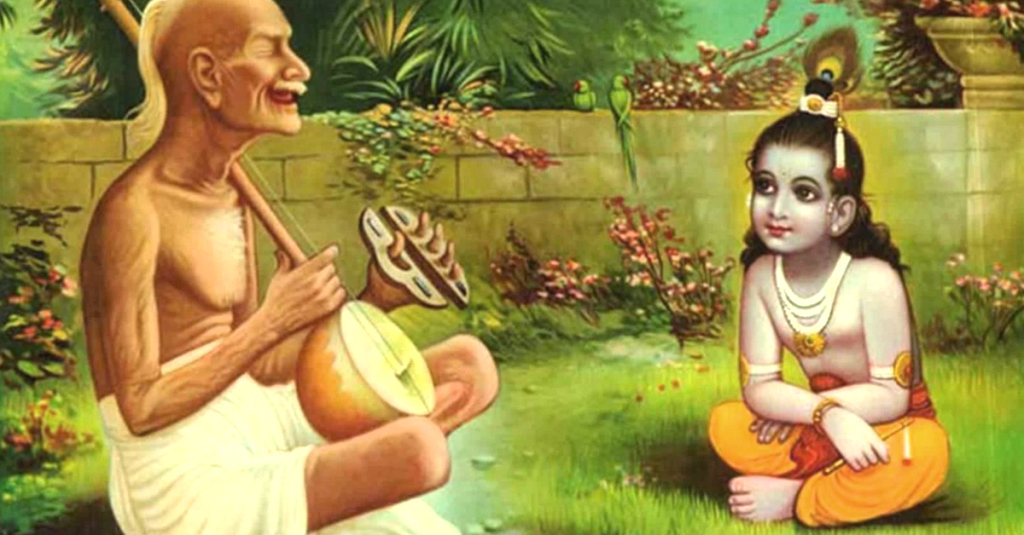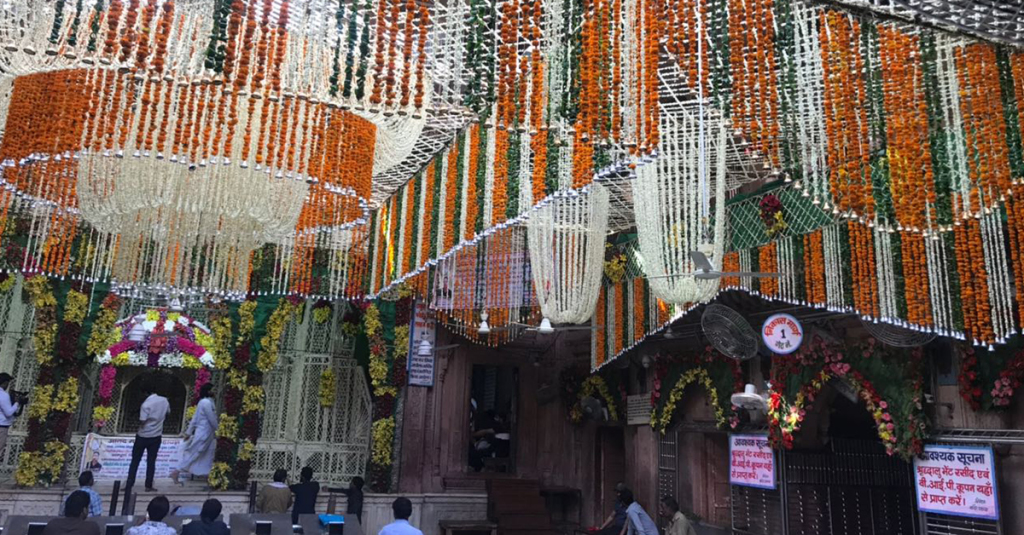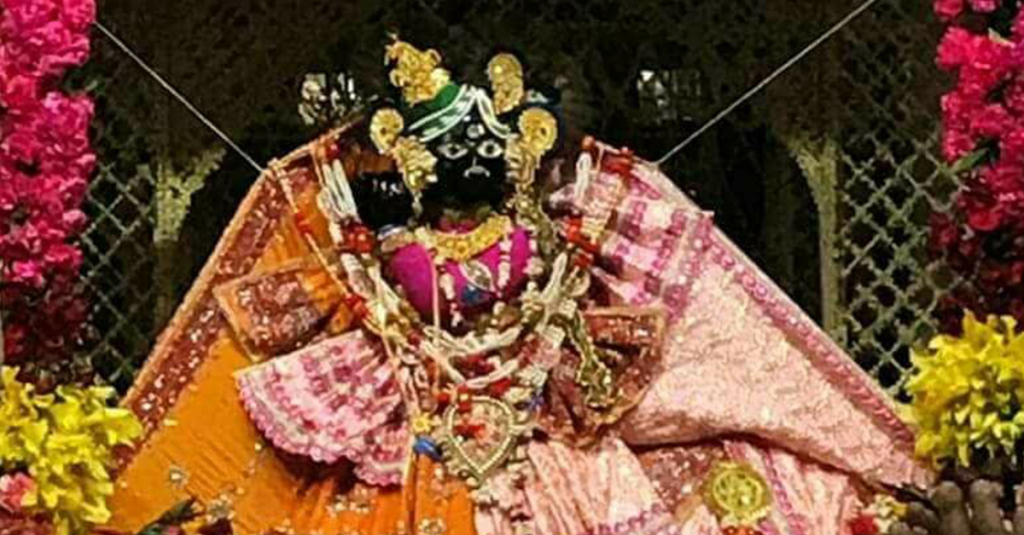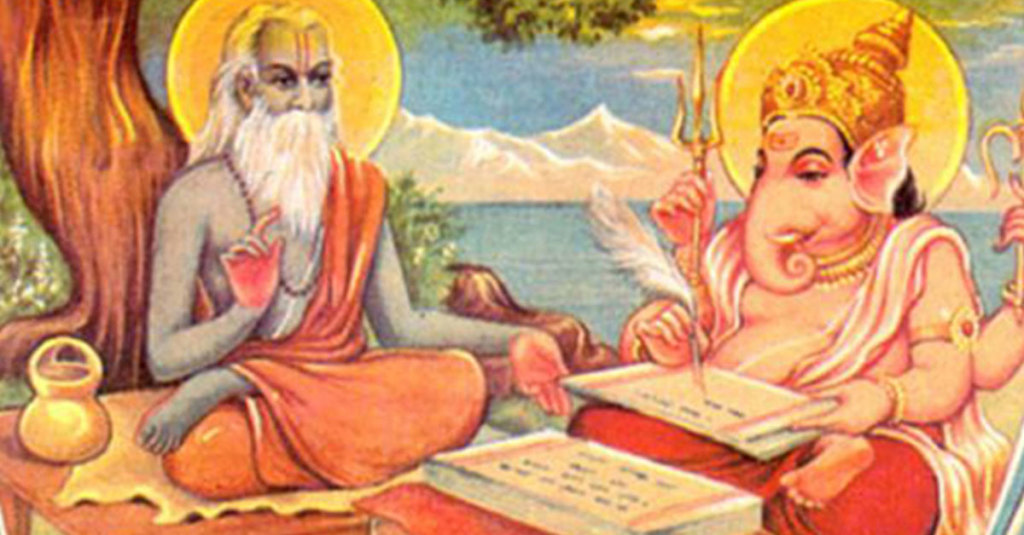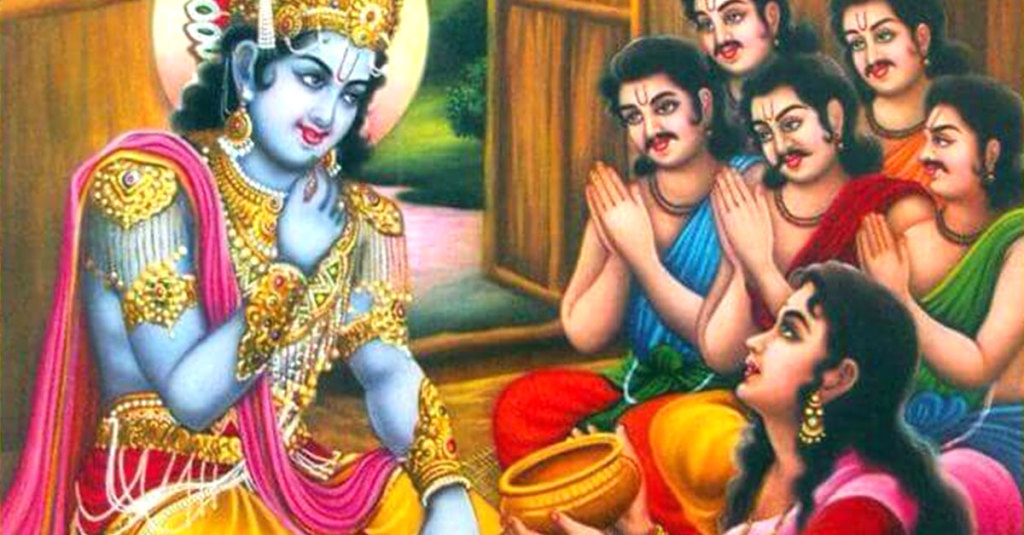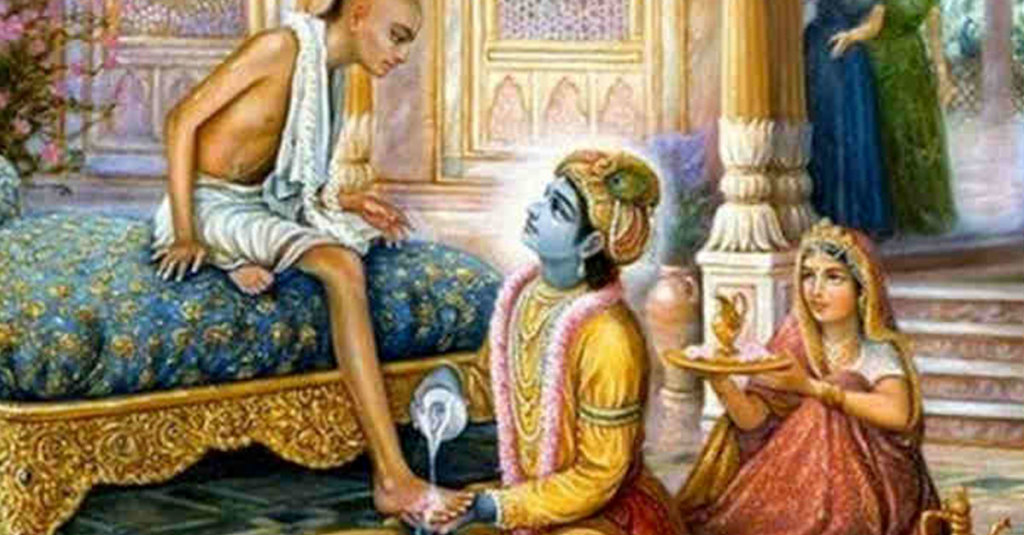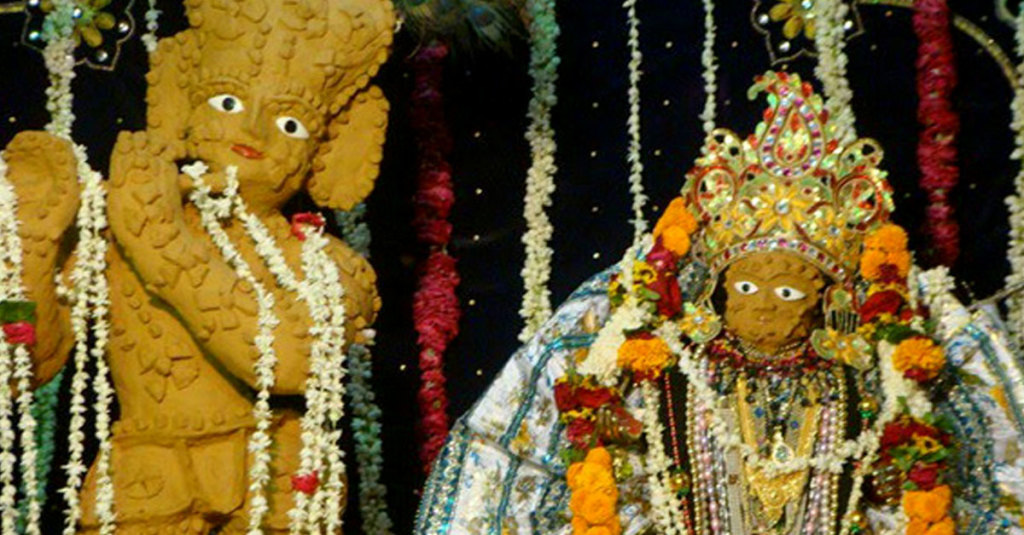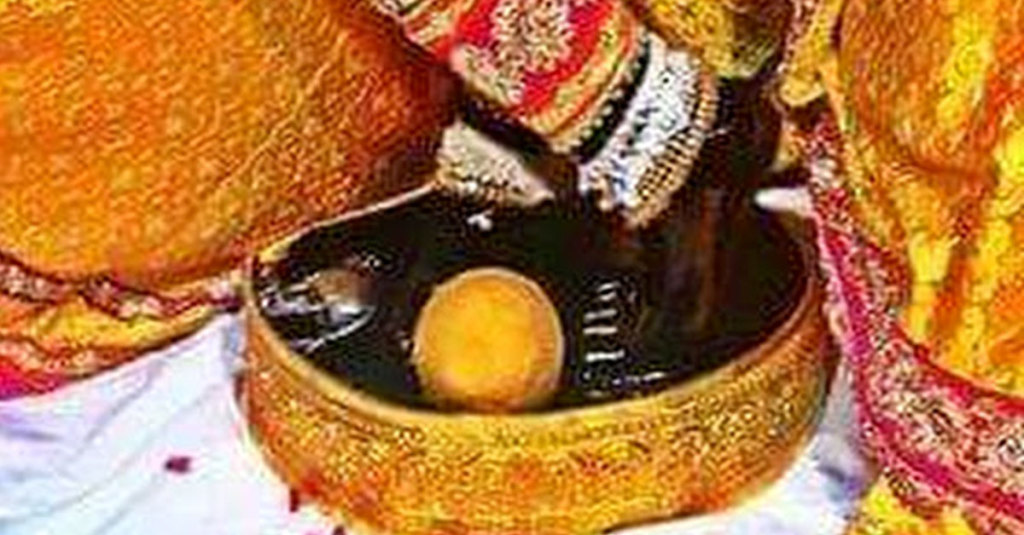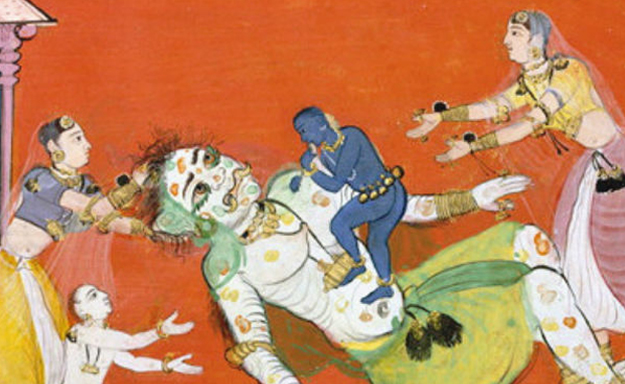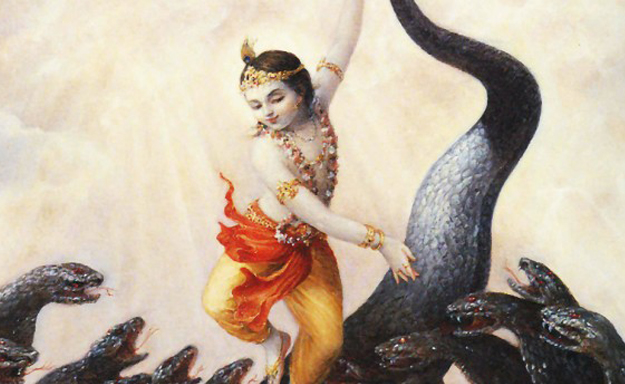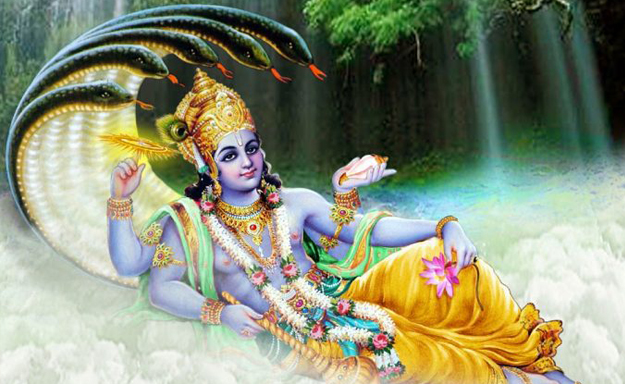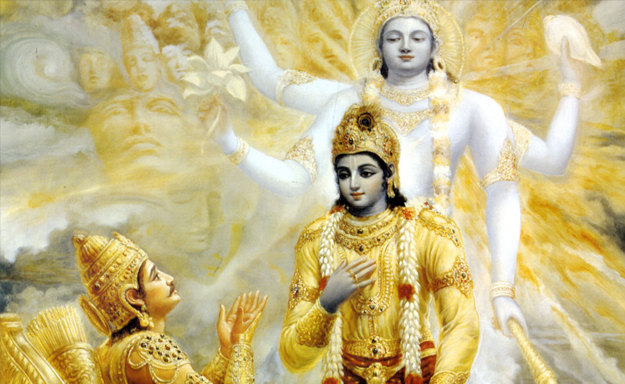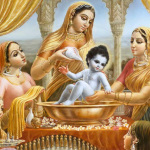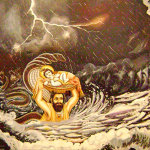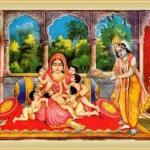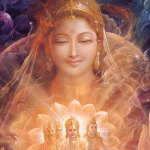The Beautiful Story Behind Phool Bangla
Every season has its special significance in Vrindavan, and summer is no exception. As the season arrives in holy Braj, juhi, bela, ratrani, motia and other summer flowers rise to the occasion of serving Bihariji and welcoming His devotees with the sweetest fragrance in the world. From Chaitra Shukla Ekadashi (March)to Shravan Krishna Amavasya (August), Bihariji enjoys the Phool Bangla, meaning the house of flowers.
The Legend
It is believed that the tradition of Phool Bangla can be traced back to the gifted poet Surdas, a disciple of Shri Ballabhacharya. Although he was blind, Surdas could ‘see’ lord Srinathji. So deep was his devotion that Surdas could have divine darshans of the Lord. He composed many songs eulogizing the Lord’s beauty and grace. In fact, he used to sing compositions every day detailing Srinathji’s appearance. So vivid were his descriptions that everyone would be amazed. It is said that although Surdas could not see with his eyes, his mind’s eye was so powerful that he could even describe the colors of the Lord’s attire.
One day, with the intention of demonstrating Surdas’s divine power, his guru Ballabhacharya adorned the Lord with flowers only. On that day, Srinathji wore no clothes but only attire made out of flowers intertwined together. So dense was the flower weavings that no devotee could understand that the Lord was wearing only flowers. The only exception was Surdas. On that magical summer evening, the blind poet sand, “Aaj Hari dekhe nangam nanga” which translates as “Today I saw Hari naked”.
Phool Bangla Decorations
Almost all the evenings of the four-and-a-half-month-long Phool Bangla festival witness enthralling flower decorations that in a way reflect the profound devotion with which the Goswamis have been doing this for ages. Thakurji comes to the Jagmohan where the phool bungalow is erected with wooden frames of various shapes and sizes. Next, the wooden frames are covered with strings of flowers woven so intricately that they resemble the ‘jali’ pattern that one usually witnesses in Rajasthani palaces. The decorated frames are then arranged in such a way that they give the impression of a house or bungalow. The panels create a main room, canopy, side rooms, staircases, and pinnacle.
Thakurji’s attire during Phool Bangla
Flowers not only decorate the ambience but also Thakurji. Leaves, flowers, and buds are woven into beautiful bracelets, armlets, crowns, earrings, and garlands to adorn Thakurji. Apart from flowers and their buds, ornaments are also made with banyan leaves cut-outs.
Words can hardly capture the beauty of Phool Bangla. You need to be in Vrindavan during summer to soak in the beauty that’s all around. Becoming a Krishna Bhumi Holydays member will help you participate in all the Vrindavan festivals. You can stay in your luxury apartment in Krishna Bhumi, just a few minutes from Banke Bihari temple, and spend 7 magical days in Vrindavan every year.
Radhe Radhe!
How is Akshay Tritiya celebrated in Vrindavan? How is Sri Krishna related to Akshay Tritiya?
The holy town of Vrindavan is famous for its beautiful festivals and unique traditions. While Vrindavan’s holi is famous all over the world, did you know that Akshay Tritiya too is celebrated in a special way in Vrindavan? Let us read more about it but before that, let’s find out more about the significance of this auspicious day.
What is Akshay Tritiya?
Akshay Tritiya is an important day for both the Hindus and the Jains. It falls during the Shukla Pakshya Tritiya in the Baisakh month. ‘Akshay’ means ‘that which does not diminish.’ It is believed that whatever good deeds one performs on Akshay Tritiya multiples manifold. Many choose to invest in gold, begin an investment, and start a new venture on Akshay Tritiya. It is also a wonderful day for marriage. Each moment of this day is considered to be ‘shubh’ and fit for any auspicious beginning.
What happened on Akshay Tritiya?
Performing an Akshay Tritiya pooja is very popular among Hindu households. However, the significance of this day dates back to centuries. This is one day when history seems to blend with mythology and sometimes form a mystifying blur.
Here are a few things that are believed to have happened on Akshay Tritiya:
Beginning of the Treta Yuga: The yuga that followed the Satya Yuga is believed to have begun on this day.
Scripting of the Mahabharata began: It is believed that Ved Vyas and Lord Ganesha started writing the great epic on this day.
The Ganges descended on the earth: The holy river Ganga descended to the earth on this day.
Goddess Annapurna was born: Goddess Annapurna, the goddess of food, was also born on this day. It was also on Akshay Tritiya that Annapurna fed Shiva disguised as a beggar.
Lord Parashuram was born: The sixth incarnation of Lord Vishnu was born on this day.
Yudhishthira received the Akshay Patram: Pleased by Yudhishthira’s prayers, Surya or Sun God blessed him with the Akshay Patram that would supply them with an inexhaustible supply of food for the next 12 years.
Sri Krishna and Akshay Tritiya
Draupadi: Legend has it that once when Sri Krishna visited the Pandavas along with His retinue, the exiled Pandav brothers received Him with all ceremony. However, Draupadi did not come out of her kitchen. Sensing that something was amiss, Sri Krishna entered the kitchen. Inside, a teary-eyed Draupadi showed Him an empty bowl and said that it was all that she had in her kitchen. Sri Krishna, on the other hand, asked His sister, if the bowl was truly empty because there was a single grain of rice stuck to it. Sri Krishna had this single grain and as soon as He did so, the hunger of the entire universe was satiated. This miraculous episode happened on Akshay Tritiya.
Sudama: Krishna and Sudama were the best of friends during their childhood days. However, with time, the two friends parted ways. Sudama pursued the Vedas and Sri Krishna became the king of Dwarka. One day, when Sudama, then a poor Brahman, saw a peacock feather in his son’s hand, he was reminded of his friend Krishna. His wife suggested that he should visit Dwarka to meet his friend and to ask for financial help. Although reluctant at first, Sudama agreed to his wife’s proposal and started his journey to meet his long-lost friend. He carried with him flattened rice or poha since Krishna loved it as a child. When Krishna met Sudama, He was overjoyed. He extended warm hospitality towards His friend and asked Sudama what he had brought for Him. The poor Brahman was embarrassed to give the king of Dwarka the little poha that he was carrying. However, Krishna liked His friend’s thoughtful gift very much. Sudama could not ask for any monetary help and left for his home. However, Sri Krishna understood and blessed Sudama with riches. When Sudama reached home, he found that his humble hut had been replaced by a palatial building overnight! This happened on Akshay Tritiya.
Celebration of Akshay Tritiya in Vrindavan
Chandan Yatra
On Akshay Tritiya, the idols in Vrindavan temples are smeared with sandalwood from head to toe. This is known as Chandan Yatra. Sandalwood is applied to offer the gods some relief from the rising temperature.
Darshan of Bihariji’s feet
It is on Akshay Tritiya that devotees get a darshan of Bihariji’s feet. This is the only time during the whole year when that is possible. Devotees flock to Vrindavan on Akshay Tritiya for this auspicious sight.
Krishna Bhumi is just 10 minutes away from the Banke Bihari temple. When you become a member of Krishna Bhumi Holydays, you can stay in your home in Krishna Bhumi and immerse yourself in the glory of this holy land.
Radhe Radhe!
Why is Sri Krishna blue?
A beautiful little kid mischievously stealing butter from a pot, and later on, a stunning youth mesmerising everyone with His magnetic flute. That is how most of us would visualise Shri Krishna. Even if for a moment, we forget all about His miracles and Leelas, the one thing that set Him apart from anyone else was His blue colour.
Why is Sri Krishna blue? Let us seek the answer in various explanations and interpretations.
Drinking Putana’s milk
Krishna’s evil uncle Kamsa sends the demoness Putana to kill infant Krishna. Putana, disguised as a beautiful woman, comes to Gokul and requests Yashoda to allow her to breastfeed her little one. In those days, it was a common practice. Like the other people of Gokul, Yashoda too was mesmerised by her beauty and permitted her to breastfeed Krishna. However, Putana had smeared her breasts with a mandana or intoxicant with the intention of killing Krishna. According to the later versions of this story, Putana smeared her breasts with a poison. Other stories even say that her milk itself was poison.
Sri Krishna not only drank her poisonous milk but also sucked out her life. It is believed that the poison, however, entered His body and gave Him the blue colour.
Subduing Kaliya
Kaliya, a poisonous snake, came to live in the Yamuna. It is believed that the four leagues of water around him boiled with poison. One day, when Krishna was playing with His friends, their ball fell inside the Yamuna. Krishna jumped into the river to get His ball and thus encountered the venomous Kaliya. At the bottom of the river, Kaliya wrapped himself around Sri Krishna’s body but He, in turn, assumed such a huge shape that the serpent had to release Him. Later, Sri Krishna danced on Kaliya’s hoods, beating Him with his feet. Kaliya’s wives begged Sri Krishna for mercy. Kaliya too realised the greatness of the ‘little kid’ he was trying to kill and surrendered. Sri Krishna did not kill Kaliya but asked him to leave the Yamuna and go to Ramanaka Dwipa (modern Fiji).
According to one school of thought, the poison from Kaliya entered Sri Krishna’s body while fighting the serpent and turned Him blue.
Birth from Lord Vishnu’s Hair
It is believed that Lord Vishnu planted a white hair and a black hair in Devaki’s womb. From the white hair was born Balaram and from the black was born Sri Krishna. This gave Him the blue or ‘blackish’ complexion.
Sri Krishna has a blue aura
Science tells us that the entire existence is energy in one form or the other. It is also believed that every being emits an aura, a field of energy that surrounds the body, of a certain colour. It is possible that Sri Krishna was not literally blue, but He reflected the blue aura. According to the colour spectrum, blue is a calm hue and produces a relaxing effect. It is, in fact, the coolest colour. Anyone with a blue aura reflects intelligence and self-awareness, and a collected personality. Such a person does not seek attention but impresses the others simply by his/ her presence.
It is also believed that the dominant aura is also connected to one of the seven chakras, the centre of spiritual power in the human body. The blue aura is associated with the fifth or throat chakra. Anyone with a deep blue aura exhibits oratory skills, honesty, and excellent self-expression.
It comes as no surprise that Sri Krishna manifested a blue aura. The epic Mahabharata is only an episode in Sri Krishna’s life that narrates His sense of dharma and adharma, His sense of duty, and justice. The Bhagavad Gita, which records the conversation between Sri Krishna and Arjun, is nothing short of an impressive and eloquent expression through which Sri Krishna convinces Arjun about the efficacy and significance of the battle of Kurukshetra.
Sri Krishna as the Supreme Godhead
In Chapter 10 of the Bhagavad Gita, Sri Krishna tells Arjun,
sarganam adir antas ca
madhyam caivaham arjuna
adhyatma-vidya vidyanam
vadah pravadatam aham
Meaning:
Of all creations I am the beginning and the end and also the middle, O Arjuna. Of all sciences I am the spiritual science of the Self, and among logicians I am the conclusive truth.
Sri Krishna is the universe. He is all creation, and more. Within Him are the vastness of the sky and the depth of the ocean. His blue aura is a reflection of this vastness that remains beyond the ken of human cognisance.
The upcoming Vrindavan Chandrodaya Mandir, the world’s tallest Krishna temple, is also conceived as blue. When you stay in your home in Krishna Bhumi or spend a few days in Vrindavan through a Krishna Bhumi Holydays membership, you will stay close to this awe-inspiring temple. Vrindavan Chandrodaya Mandir will mesmerise you with its imposing presence and make your Vrindavan experience even more beautiful.
Radhe Radhe!
